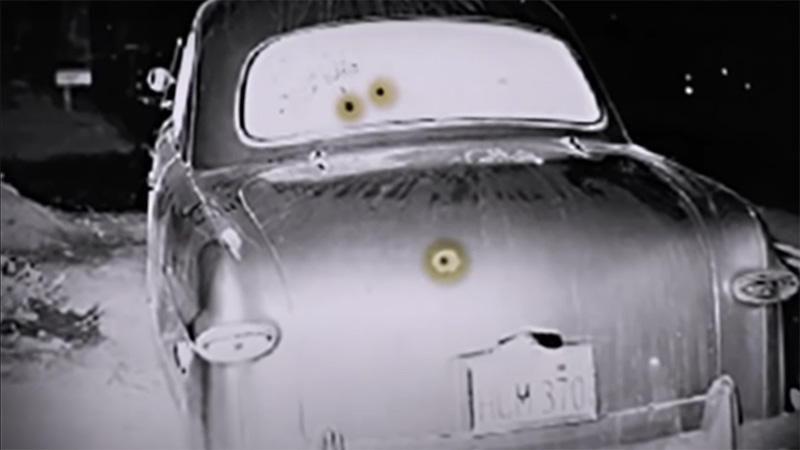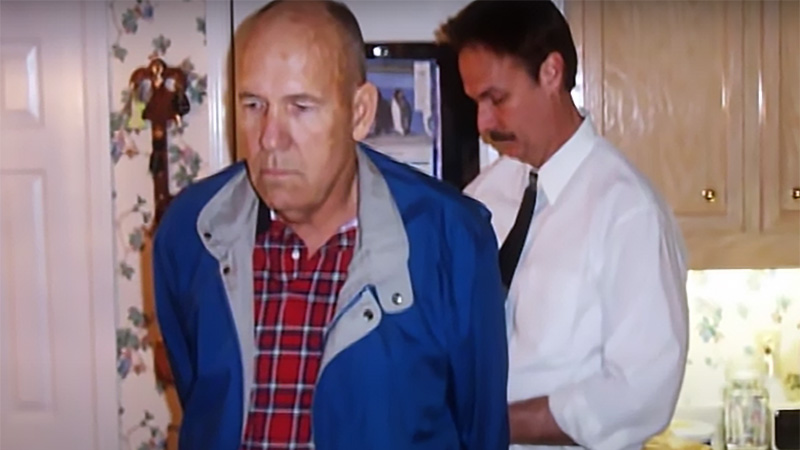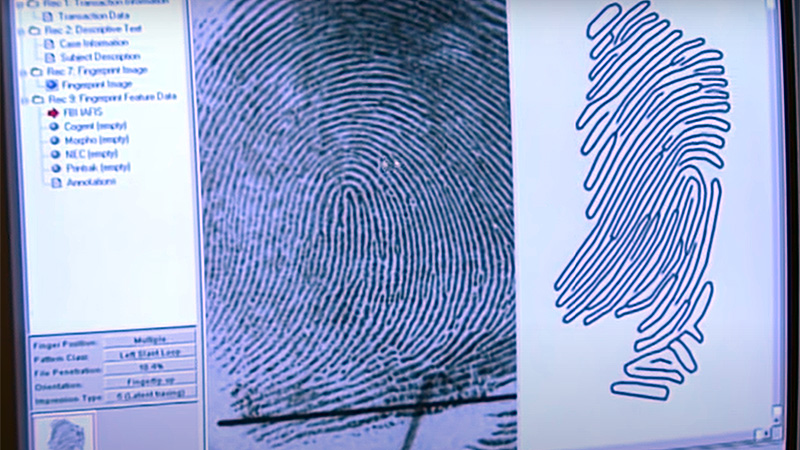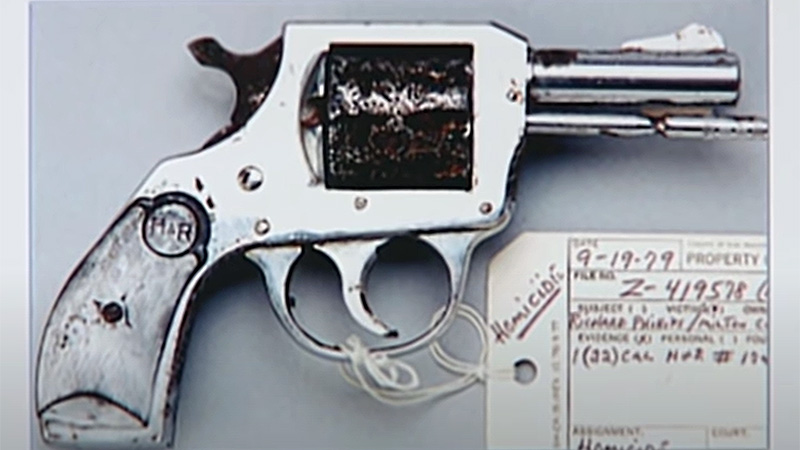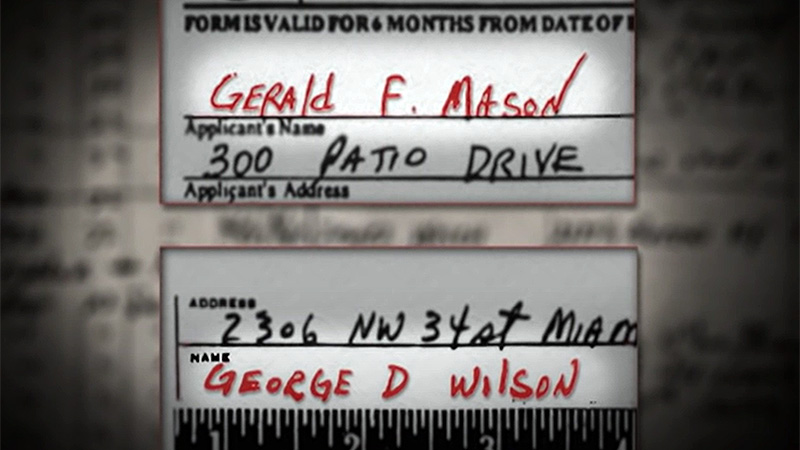Marked for Life
Gerald Mason murder of two police officers in 1957
In 1957, a young, white male stole a car from four teenagers. Then after being pulled over for running a red light, he shot and killed two police officers. It'd take investigators 45 years to identify the killer.
Original air date: May 18, 2005
Posted: May 24, 2022
By: Robert S.
Season 10, Episode 2
One night in 1957, two young couples in were doing what teenagers do in a car. But their heavy petting came to an abrupt halt when they were confronted by a man holding a gun. The young male forced all four of the vehicle's occupants to line up and strip off their clothes. From his accent, the teens could tell he was not a local, and it was apparent he'd been drinking. It was also evident that the 20-something drifter was after the teens' 1949 sedan, but unfortunately that wasn't all. After tying three of the victims' hands behind their backs, the attacker sexually assaulted one of the girls. Since all four of the victims had clearly seen their attacker, they feared that they'd be shot. But thankfully, the assailant simply drove off in their car. The teenagers were shaken, but alive.
Two police officers were on duty when the stolen car blew through a red light right in front of them. They quickly caught up to the speeding vehicle and forced the driver to stop. Since the car had not yet been reported stolen, the police had no warning of the crimes that'd already taken place. Using the same gun he'd robbed the teens with, the perpetrator got the jump on the officers, and he shot each three times. He then fled the scene, but not before one of the cops was able to discharge his own firearm at the fleeing vehicle, striking it three times. But both policemen had been fatally wounded.
The stolen car was later found abandoned nearby, and a lone thumbprint was obtained from the steering wheel. For years, this print was unable to identify a suspect. Three years after the murders, an important lead emerged when the owner of a home near the crime scene discovered parts of a handgun in his yard. Police found the weapon had been purchased in Shreveport, Louisiana by a man claiming to be George Wilson from Miami, Florida. Unfortunately, the name and address were both fictitious, and the case went cold again, this time for over 40 years.
Finally in 2002, when the Integrated Automated Fingerprint Identification System (IAFIS) had been online for a few years, investigators decided to run the latent print against all known fingerprints across the nation. To their surprise, they got a match from a record in South Carolina that had only been added to the national database two months prior. After 45 years, could police locate and charge the suspect? Was he even still alive?

The Facts
Case Type: Crime
Crimes
- Rape
- Murder
- Burglary / Robbery
Date & Location
- May 22, 1957
- El Segundo, California
Victims
- Milton Curtis (Age: 25)
- Richard Phillips (Age: 29)
Perpetrator
- Gerald Mason (Age: 23)
Weapon
- Revolver
Watch Forensic Files: Season 10, Episode 2
Marked for Life

The Evidence
Forensic Evidence
- Fingerprints
- Handwriting
Forensic Tools/Techniques
- None used in this episode

Usual Suspects
No Evil Geniuses Here ?
- None occurred in this episode
Cringeworthy Crime Jargon ?
- "Case had gone cold"
File This Under... ?
- Database cold hit

The Experts
Forensic Experts
- None featured in this episode
Quotable Quotes
- "I thought for sure he would kill the girl, because she probably had seen him. But I guess he was gonna kill all of us. And we stood out there stark naked for like three or four minutes, and we just expected to hear the gun to start going off." - Robert W. Dewar: Robbery Victim
- "The last thing officer Phillips did was that he drew his own firearm and fired six rounds in the direction of the fleeing suspect." - Darren R. Levine: Deputy District Attorney
- "How does an officer who’s been shot three times point blank in the back, who’s dying, get up and shoot at a car fleeing down the road and hit it three times, I mean that is amazing." - Lt. Craig M. Cleary: Investigative Division Commander
- "We look at things, whether documents are freely and naturally written, whether the slant is the same, the height relationship of letters, the alignment to the baseline, how the letters themselves are formed, and whether there’s open loops, closed loops, retraces, how you punctuate, how you dot ‘i’s and cross ‘t’s." - Paul R. Edholm: Forensic Document Examiner
- "The very last thing he did in life was to mark forever the man who killed him and his partner. And that’s pretty compelling. Because it’s almost as if someone is speaking to you from the grave, telling you, ‘Ladies and gentlemen, I told you who it is. I pointed him out with my gunfire.’" - Darren R. Levine: Deputy District Attorney
- "I didn’t realize I ran a red light, and I got out of the car, walked back to their car. My feelings were that what I had done was going to cause me to go to death row. So when the officer turned away from me, I shot both officers." - Gerald Mason: Perpetrator
TV Show About This Case
- Cold Case Files: Cop Killer/Evil Twin (s03e01)
Find a typo or issue with the details of this case? Leave a comment below, or contact us!

